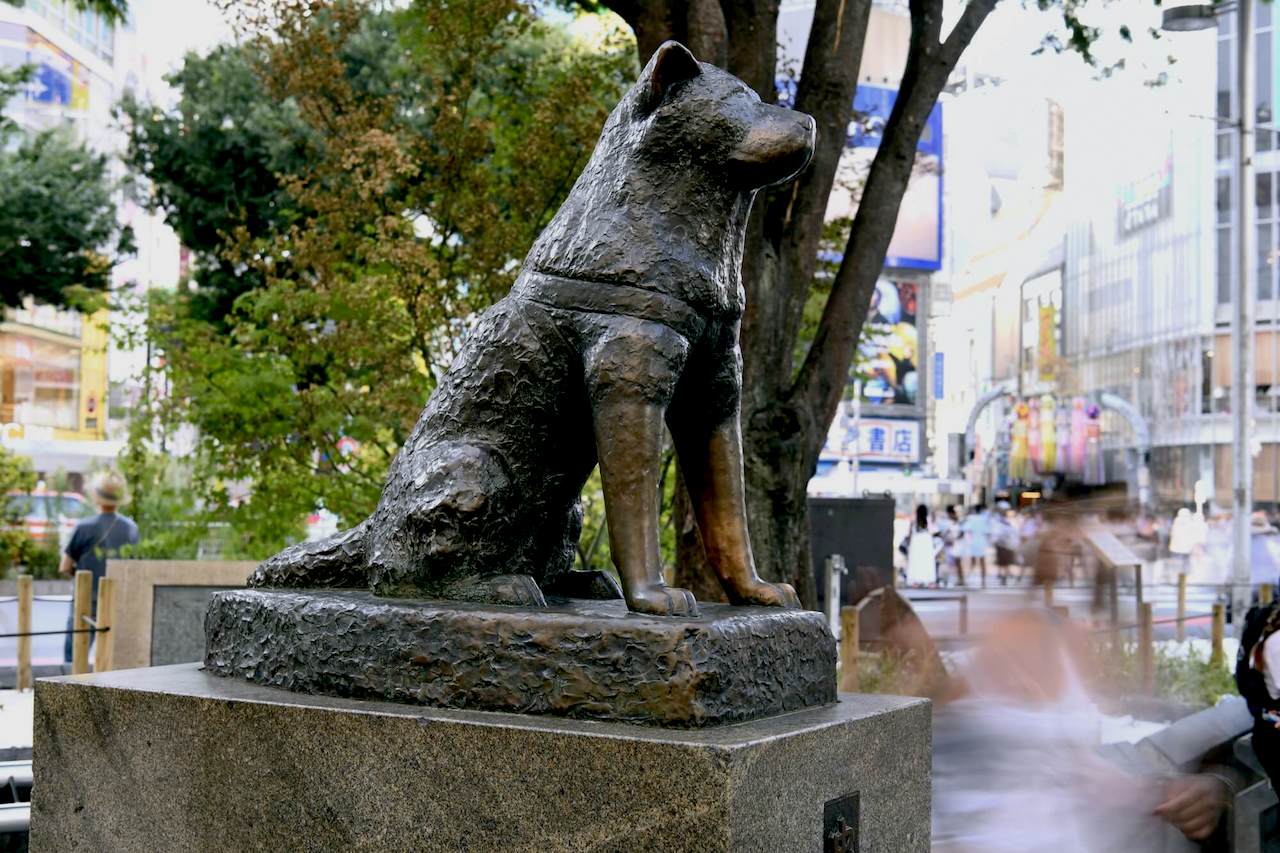A long time ago in the heart of a busy city, there was a dog who waited patiently for his master to return. Paired for only a year, the dog and master (a professor at a local university) would meet at the same spot and walk home together at the end of each day. Theirs was a bond that could not be broken.
That is, until one day when the master did not return – he had become ill and never resumed his daily commute.
The dog, however, did not abandon his post. For nine years the dog waited patiently for his master to return, surviving on the favour of other commuters who could not bear to see him suffer. He became a symbol of loyalty and devotion among the local population, inspiring a statue to be erected in his honour (which he was present for) and paw prints to mark the spot where he kept his watch, even long after he had to say good bye.
When I lived in Tokyo I became familiar with the above story of Hachiko, the loyal Akita that inspires so many even to this day. Despite taking place over 70 years ago, Hachiko remains one of the hardest working animals in existence, as his namesake marks one of the most popular meeting spots in the world for locals and tourists alike. While not a working animal in the same sense as a beast of burden or dancing bear, Hachiko nonetheless inspires countless visitors, many serendipitous, and is an integral part of the travelling experience.
Many people have very different views on the human relationship to animals. While you’d be hard pressed to find someone who views Hachiko’s story negatively, the same cannot be said for the dogs the gypsies in Europe cart around and definitely not for the monkeys that get chained to trees for idiots to gawk at. You can make the argument that the gypsy dogs are their pets and are possibly well taken care of compared to being abandoned on the street (don’t be so naïve to think the alternative is a loving, attentive home with a family), but tethering a monkey garners less complex feelings.
Yet people always take special note of animals when travelling. Locals know this and try to capitalize on it because, well, money can be hard to come by and tourists have too much of it. Most people would prefer to see an animal in their natural habitat, but those encounters are rare (because people generally suck) leading people to complain if they go on a ‘monkey jungle cruise’ and don’t see any monkeys. The only way to guarantee an encounter is to force the animal in place, but the result is a depressed animal that also makes tourists complain. Buh? I’m starting to think people are hard to please…
Seems kind of rude of the monkey not to pose for my picture… Should take its job more seriously.
The great thing about Hachiko is that he is dead. Yes, I said it. Dead Hachiko is good because if he wasn’t, I’m sure his life would be a circus with scheduled feedings and showings. People would flock the world over to see the loyal dog who patiently waits for his master but then complain that he isn’t being taken better care of. Instead, it’s merely a nice story with a statue and the people visit it to watch themselves. Much better.
If you’re ever in Tokyo, be sure to drop by Shibuya’s Hachiko Crossing and pay your respects. He’ll still be there.

